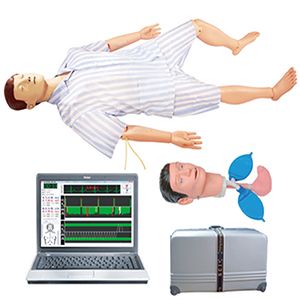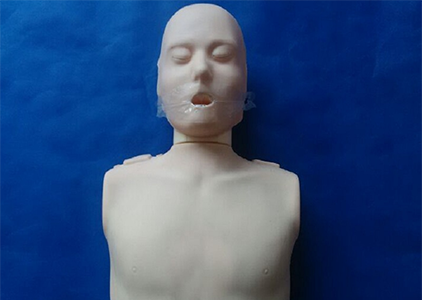
In medical education, the mastery of emergency nursing skills depends not only on theoretical learning, but also on strengthening skills through practical operation. As a highly simulated training device, the simulator plays a key role in shortening the learning curve from theory to practice. Here are a few aspects of how it achieves this:
1. Provide high simulation training environment to improve operation proficiency
Traditional medical teaching often focuses on the imparting of theoretical knowledge and basic skills. However, medical personnel are faced with the rapidly changing clinical scene in practical first aid. Integrated First Aid Training Simulators are designed to simulate real-world first aid scenarios, covering a wide range of first aid skills from basic life support (BLS) to Advanced Life support (ALS). By interacting with simulators, students are able to practice first aid operations many times in a risk-free environment, thereby rapidly improving their operational proficiency. For example, simulators can simulate different physiological reactions, such as blood pressure changes, heart rate fluctuations, etc., to help students more comfortable in the actual operation.

Integrated Emergency Nursing Training Simulator
2. Real-time feedback and evaluation to accelerate skill acquisition
Integrated First aid nursing training simulators can not only provide simulated operations, but also monitor the trainees' operation process in real time and provide feedback. For example, when performing cardiopulmonary resuscitation (CPR), the simulators provide real-time feedback on the depth, frequency, and airway management of the trainees. This immediate feedback helps students identify and correct errors in their operations, thereby accelerating skill acquisition. Studies have shown that training with real-time feedback can significantly improve the level of first-aid skills of students and achieve high performance faster than traditional training without feedback.
3. Multi-scene first-aid training to improve emergency decision-making ability
Emergency care is not simple, especially when dealing with complex cases, medical staff need to make quick and accurate judgments. The training simulator can simulate a variety of emergency scenarios, such as trauma first aid, cardiac arrest, respiratory failure, etc., and students can practice emergency decision-making skills in these simulated situations. Through repeated training, students not only improve their technical skills, but also remain calm in emergency situations and make the best clinical decisions. The data study showed that the emergency response speed of medical staff trained by simulated human was significantly improved in actual clinical practice.
4. Cultivate teamwork and communication skills
First aid is not only an individual effort, it is more often the result of team cooperation. Integrated first aid nursing training simulators support the operation of multiple people, and can simulate the cooperation situation of different roles in the team. This kind of training can help students realize how to communicate and coordinate effectively with other team members in the simulation, and improve the working efficiency of the team. In practical clinical practice, team collaboration and communication are the key factors to ensure the success of first aid.
5. Reduce medical errors and improve clinical confidence
Medical personnel face a high-pressure and high-risk environment during first aid, and any minor mistake can lead to serious consequences. By practicing repeatedly with the integrated First Aid training simulator, participants are able to build confidence in first aid operations before the real environment. The high degree of simulation and operational feedback of simulators help students to familiarize themselves with operational processes in complex situations, reducing the risk of errors in real first aid. One study showed that the accuracy of first aid operations and clinical confidence were greatly improved by simulation-trained medical staff.
6. Accelerate the transformation from theory to practice
By providing a comprehensive, multi-scene and multi-function training platform, the simulation of integrated emergency nursing training can effectively shorten the transition time from theoretical learning to clinical practice. Through repeated practice, students can not only better grasp the theoretical knowledge, but also be able to apply the theory to practice. Research shows that health care workers who receive simulation training tend to perform better in the real world than those who rely solely on classroom instruction, especially in complex emergency situations where simulation training enables them to respond more quickly.
Conclusion
The integrated emergency nursing training simulator greatly shortens the learning curve from theory to practice for medical staff through high simulation, real-time feedback, multi-scenario training and team collaboration. It not only improves the proficiency of first aid skills, but also helps students respond to emergency emergencies more quickly and confidently in a real clinical setting. As simulation technology continues to advance, such devices will become an integral part of medical education, providing important support for training high-quality emergency paramedics.







Sophie Asveld
February 14, 2019
Email is a crucial channel in any marketing mix, and never has this been truer than for today’s entrepreneur. Curious what to say.
Sophie Asveld
February 14, 2019
Email is a crucial channel in any marketing mix, and never has this been truer than for today’s entrepreneur. Curious what to say.